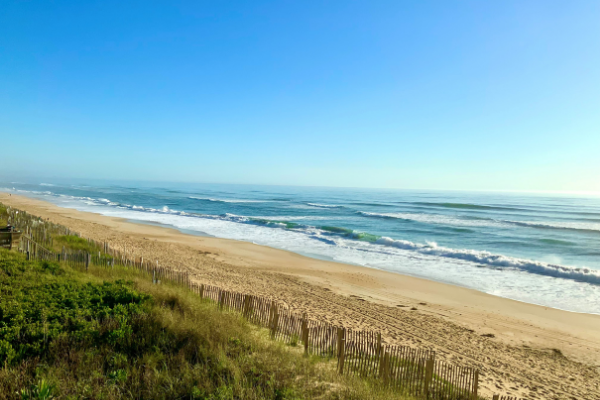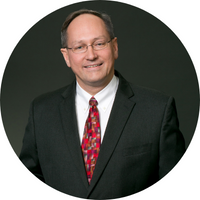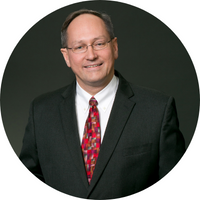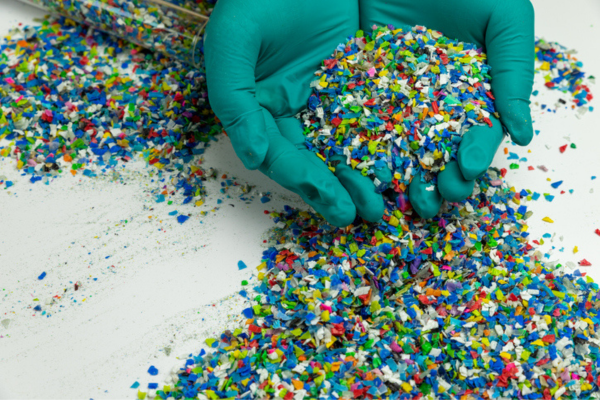
Key Takeaways:
- How John Hillenbrand knew it was time to retire
- Advice for achieving successful innovation
- A project ‘that got away’ and what John would do differently
You recently decided to retire. What told you now was the time?
As I told my team, one major outcome of the pandemic is that it caused me to reassess my priorities and focus on the few things that matter most – health, wellness, family, and friends. Since working from home since March 2020, I was surprised to find remote work far more effective than I had expected. At the same time, it was clear to me that to fully perform my duties, I would eventually have to resume a regular cadence of travel – to customers, manufacturing sites, key suppliers, etc. Being someone who strives to lead by example, when you’re no longer willing to do what you expect your team members to do, it’s time to move on.
A friend of mine prefers the term “rewirement.” After a few weeks, I see his point. No matter where we may be in our respective personal and career trajectories, we’re all “works in progress,” who have the ability to reprioritize and “rewire” ourselves for whatever we’re facing. I hope this chapter gives my wife, Frances, and me the freedom to be more intentional regarding how we spend our time and allows us to pursue what interests us.
You assumed the role of VP and Chief Innovation Officer at Owens Corning in March 2008. As you think back to that time, which primary responsibilities of that role were you most prepared to carry out, and which responsibilities were you least prepared to execute?
Despite trying to be thoughtful and diligent regarding role changes I’ve taken on within a company or when changing companies, you have to be prepared to accept that “you don’t know what you don’t know.” Back in 2008, I had spent my entire two-decades-plus career at DuPont, before making the decision to leave for the CINO opportunity at Owens Corning. DuPont had provided me with a solid leadership foundation through diverse assignments and experiences, along with the privilege of learning from some terrific leaders and mentors.
Innovation is not a simple cut and paste exercise. While there are best practices you may want to emulate and implement within your business or at a corporate level, your choices must be made in the context of a multi-year plan that creates a visible and meaningful business impact.
Each enterprise has its own unique history, culture, value chains, competitive dynamics, etc. I found that it was most important for me to develop a strong understanding of these unique aspects of Owens Corning, as I got to know the people and came up with the learning curve of the building materials and composite reinforcements markets and technologies. Fundamentally, innovation is about change – not change for the sake of change but choosing to drive the right changes that are aligned with the key strategies of the businesses that make up your portfolio. If you don’t deeply understand the organization’s culture, the improvements and changes you champion simply won’t stick.
How did your family influence your leadership style?
I guess you could say I had a traditional family life growing up in the 1960’s and 1970’s, in that my mom was a homemaker while my dad had a long career as an educator and administrator, ultimately becoming a public-school superintendent. Prior to marriage, my mom was very independent and career-minded, but later focused her energy on my older sister and me – she instilled strong values, high expectations and self-confidence in us. I learned a lot about leadership from watching my dad, as being a school superintendent can be a demanding and stressful job, given how many stakeholders and issues you may be contending with at any given time. He taught me the importance of treating everyone with respect and being open and thoughtful in weighing the concerns and positions of those impacted by a decision.
And I must give credit to my own family, as I have no doubt that experiencing the past 40+ years through the lens of a husband and father has made me much more empathetic in coaching and mentoring people on my team.
Having occupied many positions for companies as diverse as DuPont, Owens Corning, Armstrong Flooring, and Graham Packaging, which of those positions provided you with the greatest balance of job satisfaction/quality of life, and what made it so?
That’s a very tough question to answer definitively, as what means the most to you and your family at a particular time can evolve a great deal over 4 decades. In general, I’ve found job satisfaction to be directly related to how congruent your role is to what you find to be most motivating and fulfilling to you personally. In my case, the opportunity to learn, take responsibility, build strong relationships, and derive a sense of collective achievement are some of my personal drivers. There are numerous self-assessment tools – I recommend trying a few until you land on the one that seems to resonate the most with what truly makes you tick. And if you find yourself in a role that feels far outside your comfort zone, do your best to embrace those aspects that cause you to stretch – that’s what accelerates your growth and development.
Regarding quality of life, any role change that required a relocation was clearly the most disruptive to family life. It was absolutely essential that my wife, our 3 (now adult) children, and I viewed each relocation as an “adventure.” That positive approach went a long way to help deal with the inevitable challenges of a new location, new schools, etc.
Talk about the metaphorical “one that got away”. Is there a project that eluded you? Why? And if you could return to it, what would you do differently?
When you commit to a career in R&D and innovation leadership, you need to be comfortable in advocating for attractive growth options beyond the core business. Put simply, if you’re not the one pushing the envelope for the right opportunities, it’s not clear to me who will.
This example dates back almost 20 years, when many companies were experimenting with different approaches to embrace a new concept called Open Innovation. At that time, I led DuPont Ventures, where we were piloting a new business model of combining a minority equity investment with a joint development agreement, with the intent of rapidly identifying and developing new growth options for DuPont. We had the opportunity for a late-round investment in a startup with unique and complementary technology, while creating an exclusive relationship that would have jump-started an attractive co-development for one of DuPont’s business units. After a few months of due diligence and negotiations, I was ultimately unable to convince senior management that this <$5M investment was a prudent one, so we passed on the business opportunity.
The truly painful part of this story is twofold. Three years later, the startup company was acquired by a major industry player at a valuation that was 8x the valuation of our investment round. Moreover, after passing on the investment, the DuPont business unit began an internal development of the concept, which resulted in an eventual market launch almost 8 years later, probably 5+ years later than we could have initially launched with our development partner.
What could have been a powerful case study of our new business model, in terms of technology access leading to accelerated business impact (with the financial uplift of the investment being an unexpected bonus) ended up being simply a missed opportunity (along with some important lessons learned). With the benefit of hindsight, I would have built a much stronger internal coalition with the targeted DuPont business unit and I would have pushed to bring the investment decision forward earlier, so that we weren’t debating the merits of the investment during the final month of a year when we were deploying belt-tightening measures to respond to overall business conditions.
In your long career, what have you learned about working with people that they didn’t teach you at Virginia Tech and Carnegie Mellon?
It may surprise you that I did in fact learn a great deal about working with people during my college years – somewhat in the classroom and especially (in my case) on the basketball court. Playing a team sport immerses you in countless lessons in interpersonal and team dynamics, focus and discipline, time management, effective communications, valuing diversity, working together to overcome adversity, etc. And our shared experiences as teammates have forged meaningful friendships that have endured for over 40 years.
This is probably why my most satisfying career achievements have involved diverse, dedicated teams rallying around a highly challenging objective and absolutely committed to help each other succeed. When you can play a role in creating those conditions and they result in an outstanding outcome, it’s a truly special experience.
And while I realize sports aren’t for everyone (nor are sports metaphors), there is no shortage of meaningful opportunities to serve and work with people during your college years and after you’ve graduated. In addition to contributing toward something beneficial, the personal growth and development you can experience is priceless.
Regarding early career research team members (i.e., 0-5 years’ experience), what is most important for them to accomplish in their first five years if they wish to position themselves for advancement/promotion opportunities?
This is an important question, as your first 5 years are pivotal in establishing your reputation and positioning yourself for further growth and development. This starts by delivering consistently strong results in your role while demonstrating your ability to work effectively with and learn from your colleagues. Having a genuinely positive, can-do attitude will go a long way when dealing with the adversity and inevitable challenges you’ll face when working on important, high-profile projects. Proactively seek opportunities to hone your communication skills – both written and verbal – as career progression is often dependent on your ability to influence and enroll others.
This is also the time to establish your own personal network of colleagues and mentors, who can help you define career path options where you can be both challenged and fulfilled. As the saying goes, “If you don’t know where you’re going, any road will get you there.” While it’s important to consider your career options, be open to taking on broadening assignments that take you outside of your comfort zone. In my case, the experiences I had early in my career in Operations, Product Management, Six Sigma, and in multiple business units (some of which were lateral moves) were invaluable in preparing me for R&D/innovation leadership roles, given the collaborative nature of developing a new/improved offering for a customer.
In James Dyson’s recent book, “Invention, A Life,” he bemoans the lack of science and engineering in British schools, which he believes has left the UK without the technical foundation it will need to successfully compete in the global economy [according to a book review published by the Wall Street Journal on September 3]. To what degree, if any, do you think Dyson’s UK assessment applies to the United States?
Given the unique way that Mr. Dyson has demonstrated the connection between design, engineering, art, and science throughout his prolific career, his assessment should – at the least – serve as a watchout for any economy that aspires to win through science and technology. Some of the recent major innovations in the news – e.g., the resurgence of space travel, the massive shift underway in the automotive industry toward electric vehicles, the unprecedented, rapid development of multiple COVID-19 vaccines, etc. – show what we’re capable of achieving and the major technological challenges that we can overcome.
While it may be a bit of hyperbole to say engineering and manufacturing are viewed as “grubby trades” in the UK – I continue to be impressed with the quality of new college graduates here in the US who have chosen to pursue careers in science and engineering.
When you think about some of the biggest decisions you made in your career, approximately what was the ratio of “head to gut” that you used to make them?
For someone who has a natural tendency to look at situations and decisions from an analytical perspective, it’s fair to say that most major decisions have required going with my gut to a great extent. In many cases, once you’ve gotten to the ~80/20 level of analysis, and are clear on the key assumptions and uncertainties, you quickly reach a point of diminishing returns for further analysis. When a decision is especially complex, I’ve found scenario planning to be a powerful tool to help clarify and simplify your options. And it can be a useful way to communicate with and enroll others, too.
As an Adjunct Professor at Temple University’s Fox School of Business, you have led in-class sessions for an undergraduate course titled, “Entrepreneurial and Innovative Thinking.” Do you think you would have enjoyed the world of academia had you chosen that career path over industry?
I’m confident I would have enjoyed the classroom teaching, advising, and student interaction aspects of academia. Building a research agenda and group would have been an interesting challenge, but I’m not so sure about the funding side, competing for grants, etc.
The increased number of Professor of Practice slots at many universities is a very positive trend, in my view. It’s a great way to distribute the overall workload within an academic department, enabling those faculty members who truly excel in research to be less consumed with teaching, and it allows those who have substantial non-academic experiences to bring their unique perspectives to the classroom.
The fun part of the course that I taught was that the curriculum incorporated several Design Thinking tools and techniques – something in which I’ve become very interested and have utilized over the past several years. Having seen first-hand the power of design thinking applied to very different development challenges, I’ve become a real believer and advocate.
Why is innovation so hard? In your experience, what are the keys to successful innovation?
Innovation is change and change is hard. Unless you’re in the midst of a crisis, it’s much easier to maintain the status quo than to disrupt things, particularly when you consider that many innovations fail, with the customer having the final word in determining your success or failure.
Looking at my collection of excellent books on the subject, I have no delusions that I can say anything profound about innovation in a few sentences. At a very simplistic and pragmatic level, I’ve found that innovation success means you have the “right people” at the “right time,” delivering the “right value” on the “right projects.” Successful innovation starts with the best talent possible, empowered and deployed to work on the right things. They have the tools and training to be successful, which includes working effectively with customers and external partners. The innovation process is robust – ranging from ambitious front-end to more routine development projects. And you powerfully connect innovation delivery with key business results, due in large part to having the proper level of cross-functional and senior leadership engagement and support.
Breakdowns in any of these areas can lead to innovation failure, which again reinforces why innovation is so hard. But when things do come together in the right way and the result is a clear innovation success, it’s a tremendously gratifying experience for all involved.
In your August 13, 2021 LinkedIn posting announcing your retirement, you wrote the following: “What I have found to be most rewarding in recent years is the opportunity to provide support and assistance to friends and former colleagues.” How did that come to be important to you?
On several occasions throughout my career, I’ve been the beneficiary of someone who’s believed in me and taken a chance on me. Those pivotal moments have stayed with me, and I simply wanted to return the favor to anyone I could help in navigating their own career paths.
Looking back, it’s not the stuff you’ve worked on that stands out, it’s the people you’ve worked with that truly matters. I hope to continue to be a helpful career resource going forward.
How would you like to be remembered by the many colleagues who crossed your path over your long career?
It’s been said that you learn the most from your best and worst bosses. I hope that most of my colleagues would put me in the former – and not the latter – category. Over the years, I’ve strived to be genuine and authentic – someone people could trust to do the right thing for the good of the organization.
As someone who likes to spend time at the beach, describe your ideal day there. And where was the sunrise beach image captured that appears on your LinkedIn page?
The image is from the Outer Banks of North Carolina, where we’ve made a lot of memories over the years. An ideal day would include a long walk along the beach with my wife, and would no doubt include relaxing with our kids and grandkids, too. We find the beach to be a great place to bring our family together, spend time with friends, and just generally unwind and recharge. To be honest, even a less-than-ideal day at the beach can be pretty fantastic!


John Hillenbrand recently closed out his 37-year industrial career spanning four companies and multiple industries, most recently as Vice President – PET Engineering and Development for Graham Packaging. Prior to joining Graham Packaging in February 2019, he was Vice President of Research & Development and Design for Armstrong Flooring, from 2016 through 2018. Mr. Hillenbrand served as Vice President and Chief Innovation Officer for Owens Corning from 2008 to 2015. Before joining Owens Corning, he spent 23 years at DuPont, where he worked in a variety of global innovation, corporate venturing, product management, technology, and operations roles in DuPont’s polymers, advanced fibers, and elastomers businesses.
Mr. Hillenbrand is an Adjunct Professor in Innovation and Entrepreneurship at the Fox Business School at Temple University. He continues to stay engaged with Virginia Tech, serving on the Chemical Engineering Advisory Board since 2000, as a former member of the College of Engineering Advisory Board, as an appointee to the College of Engineering Committee of 100, and as a member of the Monogram Club. He is an active Emeritus member of the Innovation Research Interchange, where he has served on the board of directors and as Board Chair. He serves on the Board Standing Committee on Executive Compensation for the American Chemical Society and was elected Fellow of the American Institute of Chemical Engineers.
Hillenbrand received his bachelor’s degree from Virginia Tech, and his master’s and doctoral degrees from Carnegie Mellon University, all in chemical engineering. He currently resides in Lititz, Pennsylvania, with his wife, Frances. They have three children and two grandchildren.
This article has been edited for length and clarity. The opinions expressed in this article are the author's own and do not necessarily reflect the view of their employer or the American Chemical Society.
Copyright 2022 American Chemical Society (All Rights Reserved)










